Wednesday May 31, 2017
For: Most technically-advanced and engineered Holden out there, dynamics deliver rare wow factor, upmarket looks.
Against: Not as well finished as its major rivals, at this price flagship should have full safety package as standard, some tech still to come.
By Richard Bosselman
PRETTY soon Holden will cease making its own product and thus become an Aussie car brand in name only – how much longer before the marque’s blue collar image is shaken off as well?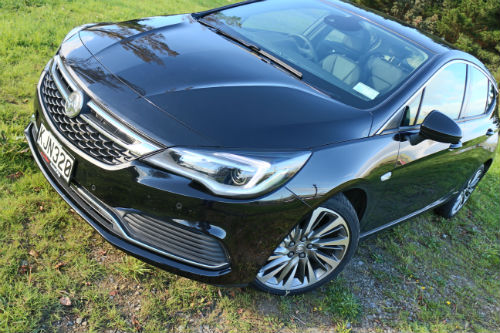
The wheels within the image-making part of the business are already turning. By leaving the car creation business behind, General Motors’ wholly (from October, when it’s Commodore line in Adelaide falls silent) Melbourne-based effort will become the hub for an all-out importation effort.
One that, in concentrating on delivering a real diversity of GM product - some from South Korea, some out of Europe, some from America – some with levels of technology that could never be availed Aussie-made product, also allows for Holden to undertake a change of image, to be seen as more of a sophisticate.
The showroom fare will include vehicles that point into market sectors where Holden has either not chosen to previously represent in or has not performed well in.
One of those spots is the passenger car zone between mainstream and true prestige. For now, it’s a place where a couple of European brands do business; the primary player being Volkswagen, which already trades on being ‘mainstream yet extra-special’, a persona Holden would love to have.
That’s also the place where the Astra intends to play. While Holden New Zealand wants its Cruze hatch replacement to pitch against all category luminaries – from the Toyota Corolla that in averaging 533 monthly sales for 39 percent market share in 2016 not only outsold by at least two-to-one the next strongest seller, Mazda3 (206, 15 percent), to the Ford Focus (114, eight percent) and Volkswagen Golf (109, eight percent) – it doesn’t mind people knowing that this car was designed by Opel to beat just two in particular; the Mazda and the VW.
The version that has lead role in that ambition is the RS-V edition, flagship and priciest of the new-gen line (though, while the old-shape performance GTC and VXR Turbos remain in play, not the most expensive Astra).
The automatic that most people will favour is nominally a $38,490 ask, though to receive the full gambit of accident avoidance tech that avails in Europe, not least the automatic emergency braking feature imperative to it achieving a fulsome five star crash test result from Europe’s NCAP, means buying into a Touring pack that adds another $1990; enough to push it into luxury-sports small car play.
Design
European cachet certainly shows through in this model’s styling; the RS-V definitely stands out extra smartly thanks to it being the sole model standing on 18-inch rims shod with the lowest-profile rubber meted this model, but even its most utilitarian guise the Astra delivers a strong visual message of sophistication and flair.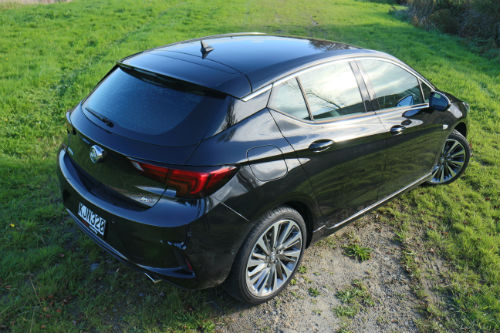
It proportions neatly and boasts decent build quality, though Holden (well, Opel) isn’t as good at ticking off the small finishing touches as VW or Mazda. Soft materials within the test car’s cabin rubbed and squeaked, but it’s an all-too-obvious proliferation of cheap-looking and sometimes unfinished plastics within the cabin that primarily won’t help in comparison with Golf or the Three.
It’s a shame that the detailing is not just that little bit better because, on the strength of how it looks inside, the impression is quite positive. In terms of quality of materials and overall ambience, the cabin feels two generations ahead of the Cruze it replaces and, in appearance at least, is right up there with Germany’s finest.
The top half of the cabin – that is, everything above waist height, is where much of the effort has gone into leaving impression of this car being right up with the latest play.
Those upper-door and dashboard plastics are top quality in look and appearance, and liberal use of piano-black and metallic silver trim also lends the right kind of moneyed ambience. There are proper door grab handles and, at night, a line of soft mood lighting that emanates from beneath the door armrests. On top of this, Holden delivers a properly meaty and right-sized steering wheel, small-diameter speedometer and tachometer, and a high-resolution touchscreen and trip computer display.
The touchscreen uses the latest version of Holden’s MyLink infotainment system, and its combination of digital radio, integrated nav and CarPlay/Android Auto is well-sorted; you’re working with the best sat nav and Bluetooth integration in any Holden here. The eight-speaker audio quality is extremely good.
Unfortunately, you cannot help but spot when the accountants dictated cost-saving. The lower dashboard plastics are hard and scratchy and there are no rear air-vents. The front seats, while comfortable, fall short of being special; they deserve extra side support and electric adjustment at this price.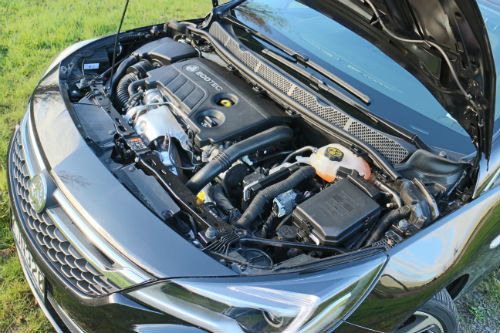
Equipment-wise, Astra is a mixed bag, too. The base specification includes fuel-saving stop/start technology (auto only), six airbags and Electronic Stability Control and passive entry and passive start, a leather steering wheel, Advanced Park Assist – a smart ‘leave it to the car’ parking feature that works well but you’ll never use for fear it might not - heated outside mirrors, side skirts and rain sensing wipers also avail as the spend increases. At RS-V level the car benefits from LED tail-lights, full leather trim with heated front seats and steering wheel, dual-zone climate control air-conditioning and a larger 8.0-inch (up from 7.0in) screen with integrated satellite navigation.
But you need to spend on that Touring pack to wholly provision to the enhanced safety systems that helped it achieve a very impressive five star NCAP crash test score. Now that the Golf and Mazda also has the key feature of automated emergency braking, it would be prudent for Holden to integrate this as a standard item. As is, you’d be foolish not to provision with the full gambit of AEB-City Stop, Lane Keep Assist, Forward Distance Indicator, Forward Collision Alert and Side Blind Zone Alert. Also, Holden has promised, but has yet to implement a smart headlight system with auto-dipping functionality. I’d want that on this car for this money, too.
Space-wise, the Astra is relatively commodious without seeming massively spacious. The front seating area is good for all shapes, but while rear seat room is aided by the bench being neatly angled, it is cosy.
A 360-litre boot is less than class-leading but it has a wide opening and 60:40 split-fold backrest capability.
Driving
An Astra ace card is that it provisions with the most advanced turbocharged four-cylinder petrol engines GM currently builds; the 110kW/240Nm 1.4-litre unit is especially good for its type – a point reinforced when we took a Trax, which lumbers with a far less impressive like-capacity unit, to the Astra launch – but the more muscular 1.6 that comes with the RS and RS-V models is pretty impressive as well.
Outputs of 147kW of power at 5500rpm and 300Nm of torque between 1700rpm and 4700rpm are very decent; the cited economy of 6.3 litres per 100km is a little less so – and potentially, despite the enthusiastic nature of the standard idle-stop technology, won’t be easily matched in NZ conditions. As a point of reference the test car returned a 8.4L/100km result from a week of mixed driving activity.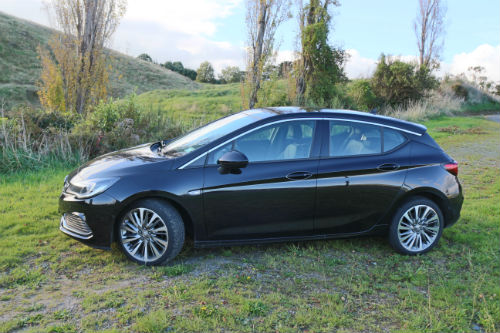
Nonetheless, the Astra is in a good place. In addition to having quite a lot of kapow, it also runs with a relatively light body. At 1344kg it is more than 100kg lighter than the Cruze Sri that it replaces, yet delivers far better rigidity and integrity. Basically, an engine of this capacity and output in a car of this weight should feel light on its feet and, potentially, particularly well-suited to enthusiast drivers.
That’s how it transpires. Even though, on the launch, the entry 1.4 manual was the most delightful variant, further time with the RS-V suggests that it would be a more pleasing car for daily use. It hasn’t the same degree of nimbleness as the base model, but there’s great compensation in it providing a sense of solidity and resolve. It just feels very ‘together.’
Holden would do well to engineer this powerplant into more models, notably those Korea-sourced cars that, at present, just don’t have much zing or driving character.
The Opel 1.6 is as good as anything else from Europe in this size of car; it revs immediately and is quick to redline, but runs smoothly and delivers a pleasingly zingy note. Holden is not compelled to deliver performance figures, but gut feel is good. Even though the automatic transmission doesn’t provide the same level of sweet interaction that comes with a manual, its sweet shift and step-off is sharp enough to suggest that it is almost in hot-hatchback territory.
The dynamic feel also abets the impression of this being a zingy little fighter. Holden fans who figure there’s additional benefit to be had from tweaking import product to suit our local (meaning Australia, though they try to say it’s NZ too) conditions might be disheartened to heard that the brand was perfectly happy with the European suspension tune, so left it alone, retuning only its electro-mechanical steering and electronic stability control (ESC) calibration. Fact is, though, that Melbourne office made the right call: Though the suspension setting that Opel delivers is quite firm – to the point where the car feels a bit jittery on coarse chip (and noisy, too) – the benefit is that it also has a very engaging keen-ness to its demeanour. There’s an alertness and agility to it that provides a sense that it loves nothing better than the challenge of a winding road.
It’s not a full-out street racer. Mindful that this model will, for the most part, be strutting through streets, they’ve given decent urban attitude, too. The suspension, despite those low-profile tyres, has enough lushness and yield to it to deal to imperfections like cats eyes and you find the steering, at low speed, becomes more fluid, without losing any feel.
Holden should be pleased with how it drives, but shouldn’t let this get to its head too much: Fact is, the rival cars that provided the benchmark during development are just as good, if not better in some regards. For instance, the latest Mazda3 is just as deft on decent driving roads and the Golf is brilliantly sorted to impart a sense of above average all-round appeal. Arguably, though, the RS-V is a more engaging car that VW’s gem.
Decision
Though not without flaw, the Astra proves that Holden has made the right move into reviving product-sourcing association with Opel.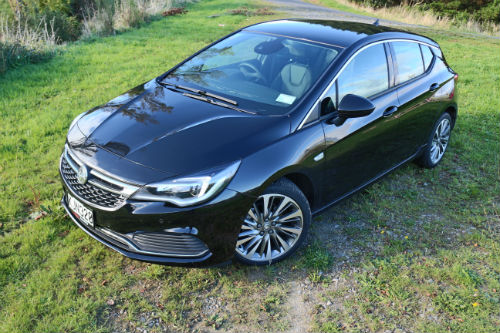
This car, not least in its highest-end form, delivers features, technology, performance, design and dynamics that GM’s other international suppliers have not yet been able to provision. It also shows what a great job Holden itself did with the outgoing Commodore which, though not as finely finished or as advanced, certainly stands up to comparison on so many levels.
The irony about Astra is that, having barely established here, it has suffered the turmoil of a change of parentage – insofar that Opel has now been sold off to France’s PSA.
There’s no threat to the car in current form – the current generation will keep coming as a Holden for as long as Holden wants it, but that build cycle might only last six years.
What does the maker of Peugeot and Citroen product have for this car - and, ofr that matter, rthe next Commodore - beyond that time? On the strength of what we are seeing at the moment, Holden cannot afford to lose cars of this quality.


